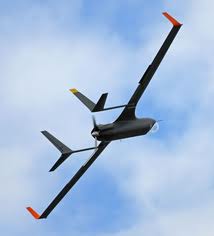US Naval Special Warfare Command this month will commission a new active-duty group that will concentrate the component’s UAS, underwater systems and robotic programmes and personnel under a single entity.
The establishment of Naval Special Warfare Group 10 reflects the increasing importance of UAS in the elite forces. “I can think of nowhere where SEALs are operating today where they’re devoid of UAS support,” said Cmdr. Robert Witzleb, the director of technical special reconnaissance at Naval Special Warfare Command.
The Navy is developing a new robotic platform called small tactical unmanned aircraft system, or STUAS based on Insitu’s Integrator. The programme intends to begin fielding the aircraft as early as next year. The systems will complement the Insitu-made ScanEagle, a commercial technology that NSW procured as an interim solution for its intelligence, reconnaissance and surveillance needs. Naval Special Warfare personnel who are not trained as SEALs fly that system.
STUAS will accommodate a 75-pound payload — a drastic improvement over its predecessor’s 5-pound limit. It is also a rail-launched system with greater endurance and higher altitude capability. “Acquiring STUAS allows us to fill a gap,” said Witzleb. “The only option we have right now is to request a Predator or Reaper.”
By design, the system will be operated by dedicated Naval Special Warfare personnel who are not SEALs, said Witzleb, who is also the commanding officer of the Naval Oceanography Special Warfare Center. He oversees about 100 personnel who provide meteorology and oceanography support to NSW. They also have a secondary function as unmanned systems operators.
“There’s just no time to take a SEAL who has all these other responsibilities — being able to jump out of airplanes, being able to combat dive, all these other skills and then heap on UAS operations,” explained Witzleb. “NSW has gotten smart over the past 10 years by bringing on folks who are not SEALs, not trained combat divers and parachutists, to do the work on behalf of SEALs.”
However, it is true that every SEAL is conceivably a pilot when it comes to the small, hand-launched systems such as the Raven or Puma, which are allocated much like other gear, whether it’s rifles or radios, he added. ”The ability of a SEAL to stand up from a fighting position and hand-launch a UAS that can then be used to do force protection over movements or locate an enemy’s firing position near instantaneously, is never going to go away,” Witzleb said.
For the larger systems, the UAS operators form detachments that marry up with SEALs on deployments. They can break down into smaller groups or aggregate into a larger element as necessary in the field. “We have designed ourselves in such a way that the smallest conceivable subdivision of NSW operations would be able to have some UAS capability associated with it,” said Witzleb.
When STUAS comes online, it will not replace ScanEagle. “There was never an intention to procure STUAS and then allow ScanEagle to collect dust. With current budget pressures, ScanEagle is envisioned to continue to be part of our family of systems,” said Witzleb.
Underwater robotic systems are also a part of the family, but because of budgetary constraints and war priorities, the semi-autonomous hydrographic reconnaissance vehicle and others have not been maturing as quickly as the airborne platforms.
I think everyone recognizes that on short notice, NSW could once again find themselves operating in the littorals and not landlocked, and those UUV programmes could be every bit as important in that operating environment as they have been in the past,” said Witzleb.
“If we were not resource-constrained, we would probably still be making large investments and continuing development of UUV systems. However tradeoffs have to be made. Right now, with most SEALS having two feet on the ground, bigger investments are being made in airborne systems.”
Source: National Defense Magazine

